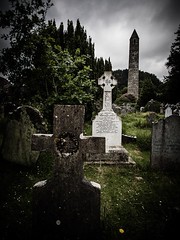I thought I would share a little tail of woe so that I won’t repeat it and hopefully others can find a way out of a similar situation without going into a melt down!
It all started this week when my frail old Samsung Slate 7 laptop with a miserly 4Gb RAM and 120GB SSD drive (with only 10Gb free) which I dedicate only to programming, all of a sudden started really slowing down while I was in the middle of programming with a critical 4Gb password encrypted Veracrypt file open (stored on a 120Gb microSD card).
There was no indication of what was happening, no message that hey, Microsoft is enforcing a major background update to Windows 10 without telling you and it is screwing up your Windows big time not to mention making it almost totally unresponsive!
The taskbar started doing weird stuff, all attempts to open up the Task Manager to see what was going on failed. I decided to save my work and close my programming environment down just in case this was a hardware failure or a virus.
I think the first error I made at this point was to forcibly re-boot the computer.
Windows started up again and it now looked like perhaps a background update was happening and I then was asked to install driver software updates – but still no explicit message from Windows that it was indeed installing an update.
I let the system do its thing this time and waited until the activity resolved.
I went into Veracrypt to open my file and to my horror, it said it can’t read the file as it was corrupted.
Yep probably because the laptop was running so slowly when I saved it, it had not completely saved the file to the micro SD card.
No problem, been here before, I will run Mcrosoft’s CHKDSK to scan and repair the SD card – big mistake this time – it deleted my precious file!
Google sent me down a rabbit hole of further despair
I jumped onto Google to see what I could do to retrieve it from the ether and Microsoft’s site said to download and install their Windows File Recovery app from the Store – I did so, and ran it but this failed with an error which indicated the card was still corrupted.
Google search then informed me that I should do a CHKDSK again but this time with CHKDSK /f /r and this took for ever and notified me that it had found the lost files and converted them into a number of files called FILE*.CHK with folders called FOUND.xxx
It is possible the CHKDSK was actually needed to be run as I am not sure the following solution would have worked without first repairing the drive.
Perhaps Microsoft’s Windows File Recovery would now work – I decided not to trust it.
Time to BUY software to recover files!
This was NOT looking good so I decided it was time to buy software that purports to recover such files deleted or corrupted and spent some hours reading reviews and trying to ascertain which would suit my needs the best.
I settled upon purchasing EaseUS Data Recovery Wizard Pro version and installed this on a different laptop then used it to scan the Micro SD card which took about 20 minutes for the Advanced Scan – thankfully it not only found those FILE*.CHK files that CHKDSK had created in hidden folders but also a “deleted” seemingly intact version of my critical file dated the previous day – it recovered this file nicely to my laptops C: drive (NOT to the same SD card as this would be problematic for other potential file recoveries!) and I am very pleased and much relieved to be able to tell you it works perfectly – Veracrypt had no trouble opening it and the embedded files all worked perfectly!
Interestingly it also found the names of presumably every file that has ever been on that SD card as it stated there was over 570Gb of them – seeing as the card was only 128Gb in size I am sure most of those older files would not be retrievable as they would almost certainly have been over-written.
Furthermore, it seems that when you open a file volume in Veracrypt and make changes to the contents and you then close the file volume, Veracrypt deletes the previous version which stays on the drive as a hidden deleted file (assuming there is sufficient space) as in my case above, and writes a totally new file. In other words Veracrypt actually makes a hidden backup for you automatically although over time this runs the risk of being over-written.
It did also allow me to recover the hidden 4Gb FILE000.CHK to my C: drive and after renaming it back to it’s original name it, the FILE000.CHK also amazingly opened in Veracrypt without a problem.
There is a free version of EaseUS Data Recovery Wizard but it only allows recovery of files up to 2Gb in size.
Some tips!
- Prevention is better than cure – ALWAYS back up your files and do it frequently!
- Given my laptop resources and the slow file transfer time for a 4Gb file from the micro SD card to an external backup drive, I had become lazy and forgotten to do a backup in the last 4 weeks – Covid state of mind perhaps – don’y namke my mistake if you have important files, in my case it would have taken me 50 hours + to re-program everything I had lost – even if I could remember how I did it!
- Do NOT save ANYTHING to the drive which has a corrupted or deleted file until you have recovered it – doing so may prevent recovery!
- thankfully I recognised the problem before I accidentally saved other files to the drive and it was nice it was on a SD card and not my C drive as I could install software on a different drive even a different computer and then move the SD card across.
- Think twice about using CHKDSK but if it does DELETE you file there is software out there such as EaseUS to recover it as long as you obey tip 2.
- I was always dubious about these utilities but it worked beautifully and easily this time for me so this one gets a thumbs up from me and he saved me many hours of work so I am not going to begrudge the money I paid for it.
Now that I have fully backed up my micro SD card, I think it prudent to re-format it to give it a cleaner start.
Following full formatting, I ran the EaseUS again and no files were detected, so if you want to clean your drive then formatting will help get you there – presumably there may be other tools which could still recover files but at least EaseUS wont do it. Note that if you only do a Quick Format, EaseUS can still detect and recover the files!
Hope this helps someone – it certainly will help remind me what to do next time this happens – and unfortunately there will be a next time.










